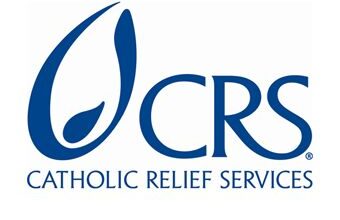Bishops’ call to address ‘maternal health crisis’ highlights U.S. maternal death rate

 null / Credit: Omurden Cengiz/Unsplash
null / Credit: Omurden Cengiz/Unsplash CNA Staff, May 28, 2024 / 06:00 am (CNA).
The U.S. bishops this month urged Congress to address the “maternal health crisis” in the United States, stressing that American women “face a high maternal mortality rate” relative to other countries.
Long a cause of alarm among physicians and women’s advocates, the U.S. maternal mortality rate has regularly been posited as much higher than similar developed nations. Data from the CIA’s World Factbook, for instance, shows the “U.S. maternal death ratio” per 100,000 births as more than double that of countries such as France and Greece, and nearly triple that of countries like Switzerland.
In their letter to Congress earlier this month, the U.S. bishops pointed to “data showing the maternal mortality rate has grown over the last two decades.”
“Women must … receive maternal health care that encompasses a wholistic view of their inherent dignity and value as expressed in the unique and God-given role of motherhood,” the prelates said.
“Women face many obstacles in obtaining quality maternal health care,” the bishops wrote, pointing also to racial disparities in maternal mortality data, with nonwhite women facing higher rates of maternal death throughout the country.
The bishops urged Congress to “consider policies that, in line with our long-standing health care principles, provide health care formulated to meet the needs of mothers from every walk of life.”
Maternal mortality calculated by several factors
Classifying maternal mortality in the U.S. has long been something of a patchwork affair due to the autonomy that states have in determining such statistics.
Jonathan Scrafford, an OB-GYN with Ascension Via Christi in Wichita, Kansas, told CNA that maternal health outcomes around the time of pregnancy “are tracked in several ways” in the U.S.
“‘Maternal death’ is a term describing the death of a patient occurring either during pregnancy, or within six weeks following the end of the pregnancy, and from causes related to the pregnancy, but excluding purely coincidental causes,” he said.
The “maternal mortality ratio,” meanwhile, describes “the number of maternal deaths in a given time period, per 100,000 live births,” which is seen by statisticians as a reliable indicator of maternal mortality overall.
Variations in classification of these deaths can result in divergent datasets between countries and even U.S. states, Scrafford said.
“Most maternal deaths in the U.S. occur during the postpartum period,” he said. “About 1 in 5 occur at some point prior to delivery; and about 1 in 4 occur between the day of delivery and the first week thereafter.”
“As for the particular conditions related to pregnancy that contribute to maternal deaths, hemorrhage and infection are leading causes in both the U.S. and worldwide,” he said. Cardiovascular disease also plays a significant role in the statistics.
Overall, maternal deaths in the U.S. “most commonly occur in the few weeks following a delivery, often during a separate hospitalization, and in many cases due to causes not typically thought of as pregnancy-related,” he said.
‘Understand and address the high rates of maternal mortality’
The U.S. figures have been the subject of debate among statisticians and medical experts in recent years. Most recently, in March of this year, researchers in Canada and the U.S. posited that “high and rising rates of maternal mortality in the United States are a consequence of changes in maternal mortality surveillance.”
The researchers pointed to the relatively new use of a “pregnancy checkbox” on death certificates issued by U.S. states, which the researchers said led to “an increase in misclassified maternal deaths.”
“Identifying maternal deaths by requiring mention of pregnancy among the multiple causes of death shows lower, stable maternal mortality rates and declines in maternal deaths from direct obstetrical causes,” the researchers said.
Advocates argue that maternal mortality rates in the U.S. are nevertheless too high, particularly among certain demographics. The Canadian researchers, for instance, noted that death rates “were disproportionately higher among non-Hispanic Black women.”
The U.S. bishops, meanwhile, similarly stressed “the racial disparities that impact women of color, particularly Black and Indigenous women,” with the prelates arguing that “poverty and economic stressors, racism, discrimination, family breakdown, and other forms of injustice” affect women and mothers throughout the country.
“Women must have access to appropriate treatment for substance abuse disorders, mental illness, and mental health challenges, especially postpartum depression,” the bishops wrote, “and efforts must be made to understand and address the high rates of maternal mortality and morbidity.”
Health habits, poverty, family structure should all be addressed
Lester Ruppersberger, a retired OB-GYN and former president of the Catholic Medical Association, told CNA that women should prioritize consulting with physicians both before and during pregnancy to ensure healthy outcomes.
“Once pregnant, early access and visits to OB-GYNs are important to evaluate/assess the health of the mother and identify risk factors and advise on how to have a healthy pregnancy and delivery,” he said.
“We do have an ever-increasing overweight population compared to 20 years ago,” he said. “Drug and alcohol use/abuse, including marijuana, is still a problem.”
“Maternal death rates are 2.5 times higher for Afro-American women and three times higher for Hispanic women overall,” he noted.
Scrafford, meanwhile, said that “many or even arguably most cases of maternal mortality are preventable.”
Many leading health authorities, he pointed out, opt for extreme measures such as abortion and sterilization to drive down the mortality rate. These options can create poor health problems of their own, he noted, while abortion itself creates “far more cases of mortality among unborn human beings than they reduce among women.”
He argued that “restoring fundamentals of health — at individual and family levels — would prove a more effective strategy for reducing maternal mortality than the aforementioned approaches which have already been failing for decades.”
“For individuals, improving nutrition, reducing sedentary lifestyles, and reducing stress are key components to reducing factors like obesity, diabetes, and hypertension, which increase the risks of maternal mortality,” Scrafford argued.
“Poverty and poor access to health care are already recognized as barriers to those changes; however, the importance of the intact nuclear family in overcoming those barriers must be more prominently recognized in public policy.”
“In my opinion the broken family dynamics which have plagued the U.S. over the past few decades have driven many of the demographic changes, as well as trends in delayed childbearing, which prove to be risk factors for maternal mortality, and yet little has been done to protect the family as an essential health determinant,” he said.
Physicians can help, he argued, by “emphasizing to individuals the importance of nutrition and exercise to maintain good baseline health,” by “encouraging women to consider childbearing during the age ranges in which their risk is lowests,” and by promoting “the importance of the intact family as a health determinant.”





